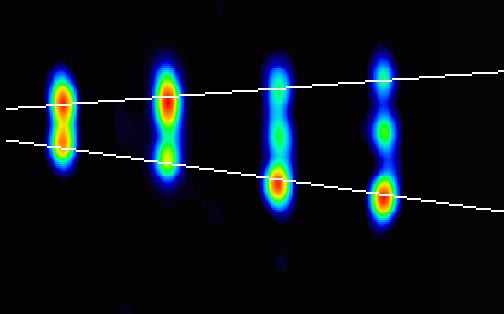Explanation: On the far side of our Galaxy, gas clouds explode away from a small black hole. This might seem peculiar, as black holes are supposed to attract matter. But material falling toward a black hole collides and heats up, creating an environment similar to a quasar that is far from stable. In the above time-lapse sequence, micro-quasar GRS1915 expels bubbles of hot gas in spectacular jets. These computer enhanced radio images show one plasma bubble coming almost directly toward us at 90 percent the speed of light, and another moving away. Each of the four frames marks the passage of one day. Originally detected on October 29th, these bubbles have now faded from view.
1999 2000 2001 2002 2003 2004 2005 2006 2007 2008 2009 2010 2011 2012 2013 2014 2015 2016 2017 2018 2019 2020 2021 2022 2023 2024 2025 |
Yanvar' Fevral' Mart Aprel' Mai Iyun' Iyul' Avgust Sentyabr' Oktyabr' Noyabr' Dekabr' |
NASA Web Site Statements, Warnings, and Disclaimers
NASA Official: Jay Norris. Specific rights apply.
A service of: LHEA at NASA / GSFC
& Michigan Tech. U.
|
Publikacii s klyuchevymi slovami:
black hole - jet - mikrokvazar - chernye dyry - dzhet
Publikacii so slovami: black hole - jet - mikrokvazar - chernye dyry - dzhet | |
Sm. takzhe:
Vse publikacii na tu zhe temu >> | |
